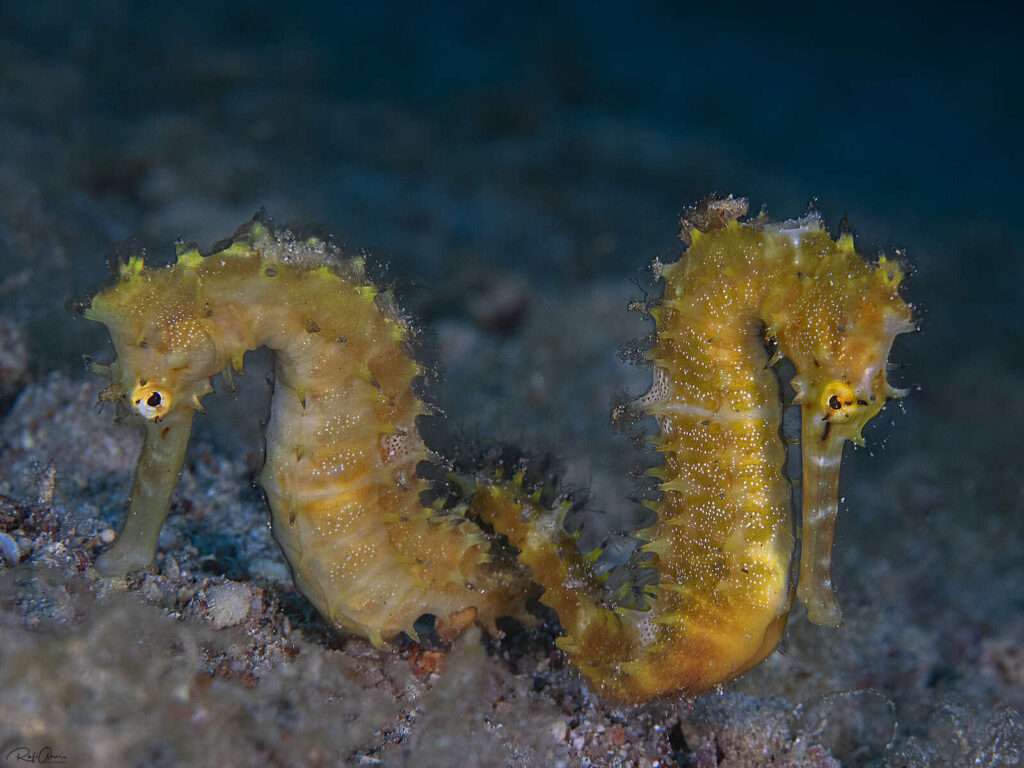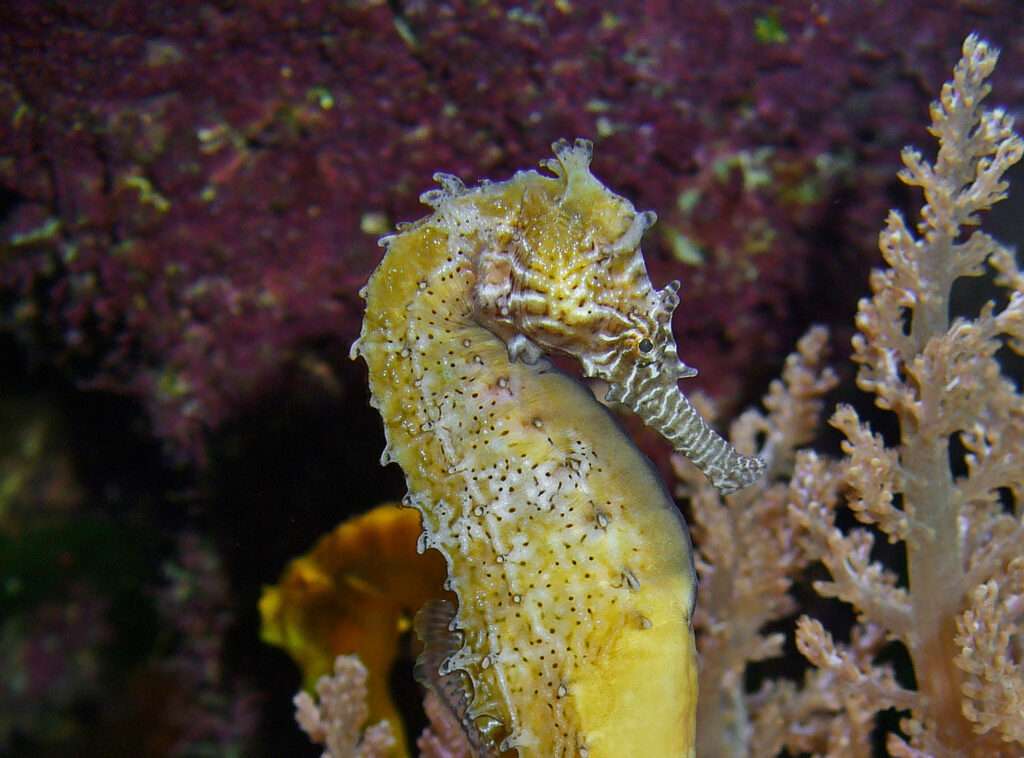
This species of coastal fish of Syngnathidae family, is sometimes known as the Jayakar’s seahorse. It is located in the Western Indian Ocean and reaches Pakistan’s central coast from the Red and Arabian Seas. In environments with seagrass beds, algae, soft bottom substrates, sponges, and rocky terrain, it can grow to a length of 14 centimeters (5.5 in). It is anticipated that it would consume small crustaceans, like other seahorses. Ovoviviparous, the males of this species hold the eggs before giving birth to live young in a brood pouch. People become sexually mature at 11 centimeters (4.3 in).
Physical Appearance
This seahorse has 18-19 dorsal soft rays and dorsal spines.

Habitat
It is located in the Western Indian Ocean and reaches Pakistan’s central coast from the Red and Arabian Seas. In seagrass beds (like those of Halophila spp. ), soft-bottom substrates, algae, rocky, and sponges habitats, it can grow to lengths of 14 centimeters (5.5 in).
Food
Like other seahorses, it is anticipated that it would eat tiny crustaceans for food.
Reproduction
A brood pouch near the male seahorse’s tail base is where the female seahorse places her eggs in order to procreate. The male then carries the fertilized eggs throughout the rest of their development. The brood pouch functions similarly to a female mammal’s womb, giving developing embryos nourishment and oxygen while removing undesired waste materials. The male goes into labour for several hours at the conclusion of the gestation, which can last between four and six weeks, and pumps the newborn seahorses out of its brood pouch. The babies are entirely autonomous and don’t get any more parental attention. The majority of seahorses are ravenous predators, consuming nearly anything moving despite their peaceful demeanor.
Table





